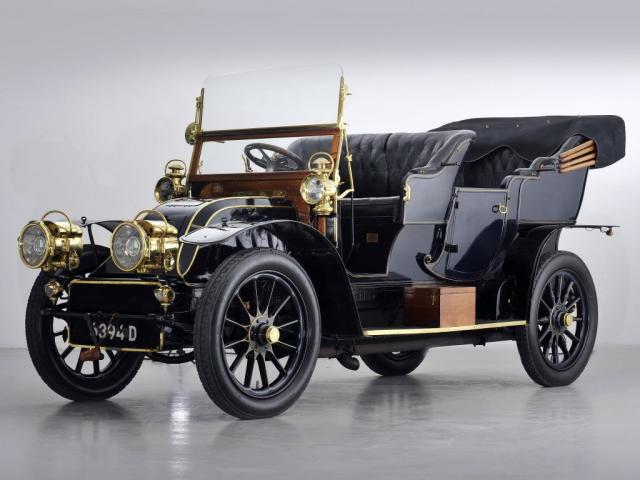1904 CGV 6.25-Litre Type H1
- Brand: CGV
1904 CGV 6.25-Litre Type H1 Four-Cylinder Side-Entrance Phaeton
Established in Puteaux, Seine in 1901, CGV took its initials from those of its three founders: Messrs Fernand Charron, Léonce Girardot and Émile Voigt, all of whom had been successful racing drivers for Panhard. Of the trio, Charron had enjoyed the greatest success, winning the Marseilles-Nice and Paris-Amsterdam-Paris races in 1898 as well as the inaugural Gordon Bennett Cup of 1901. Prior to the foundation of CGV, Charron and Girardot had been partners in a Panhard dealership and CGV's first automobiles were designed along similar lines, albeit noticeably lower-slung. The first CGV was powered by a 3.3-litre 15/20hp four-cylinder engine driving the rear wheels via a four-speed gearbox and chain final drive. A steel-reinforced wooden chassis was used, featuring transverse-leaf springing at the rear. Amazingly, the fledgling firm then produced the world's first straight-eight engine, which was exhibited in a prototype model at the 1902 Paris Salon. There was immense interest but it never entered production.
CGV soon acquired a reputation for quality and an equally distinguished clientele, which included the King of Portugal, various lesser European royals and members of the British aristocracy. It was imported into the USA and sold there as the 'American CGV' while a limited number were actually assembled in New York and delivered with locally built coachwork. By 1905 the early models' atmospheric inlet valves had been dropped and the range had expanded to include 'T-head' fours of up to 9.8 litres, some with shaft drive. Despite CGV's success, the partnership was in crisis: Girardot and Voigt left to pursue other projects and for 1907 the cars were badged as 'Charron', continuing as such when Fernand Charron left to join Clément-Bayard in 1908.
The right-hand drive CGV offered here is an example of the H1, a four-cylinder 6¼-litre car whose T-head engine was rated at 25CV under the French system but would have been judged a 32.8hp unit by the RAC method. Transmission is by means of a cone clutch, four-speeds-and-reverse sliding-pinion gearbox, and twin chain final drive. The chassis is of CGV's combined steel/timber construction, with suspension by semi-elliptic leaf springs at the font and semi-elliptic plus transverse springs at the rear. Brakes – of the internal expanding type – are fitted to the rear wheels only and there is also a transmission brake. Wooden artillery wheels are fitted. L'Autocatalogue of 1928 (published while Charron was still in business) states that 79 Type H (5.7-litre) and H1 cars were built between December 1903 and the end of 1904 with numbers ranging from '2001' to '2079'.
Descriptions & pictures by bonhams
| Specification | |
| Production Start | 1904 |
| Country of origin | France |




































